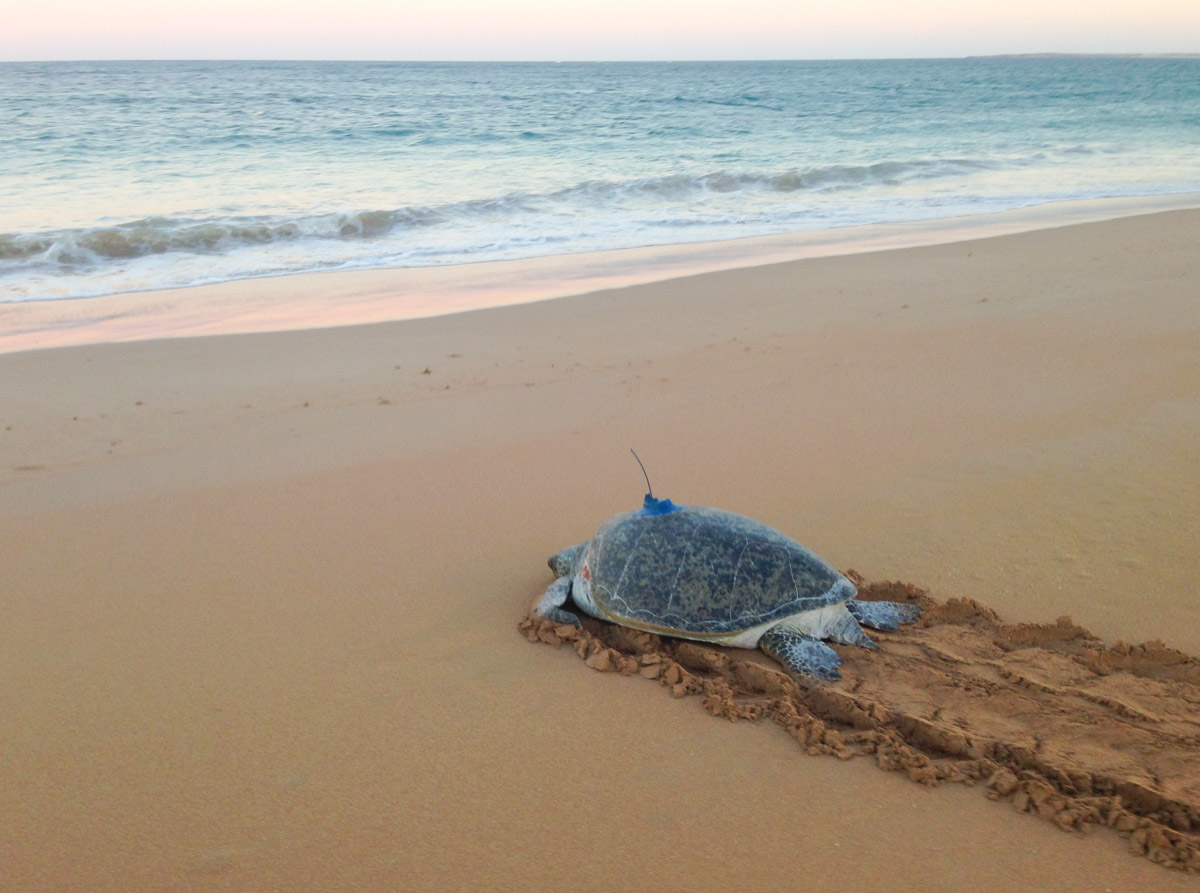Marine scientists have mapped previously unknown foraging grounds and migratory routes of Western Australia's green turtles to support conservation of the iconic threatened species.
The Australian Institute of Marine Science-led study also examined where turtles spent time during the nesting season which will allow researchers to identify the area's most important to them and to determine where this overlaps with industrial activity.
The project saw researchers tag 20 female green turtles nesting at WA beaches and track them with satellites.
They then combined their data with that from a further 76 turtles tagged in previous studies.
AIMS marine ecologist Dr Luciana Ferreira said the ultimate goal in mapping the green turtle distribution was to provide the knowledge to help reduce the species' potential interactions with human activities in the resource rich areas of Australia's north-west.
"Existing spatial protections underestimate the foraging distribution of green turtles and are missing some important areas. It's really essential for the turtles' protection if we know where they go and what they do," Dr Ferreira said.
The study shows while green turtles use existing protected areas during the nesting season, they then migrate to previously unmapped foraging grounds where they spend most of their time.
This information on the turtles' movement patterns will help scientists, industry and environmental managers protect the species in areas that are important to Australia's economic development.
Most turtles foraged within Australian coastal waters, with only two per cent of the tagged green turtles crossing international boundaries.
"We had one turtle that swam to foraging areas in Indonesia," she said. "And two turtles tagged in WA travelled all the way to the Torres Strait.
"One turtle in the study travelled more than 3000 kilometres from her nesting area.
"Interestingly, 14 per cent remained in their nesting areas-instead of migrating away they just stayed there."
Despite the differences in where the turtles migrated to at the end of the nesting season, the team found two common migratory corridors for green turtles, one in the Pilbara and one in the Kimberley.

AIMS ecologist Dr Michele Thums said collaboration was crucial to the success of the project.
"Satellite tracking is expensive and tracking only a few turtles would not have provided an accurate distribution map," she said.
"Instead, working with industry and turtle scientists in WA we were able to compile data from almost 100 tracked turtles for our analysis."
The research drew on studies from the WA Department of Biodiversity, Conservation and Attractions (DBCA), INPEX, Woodside Energy and Pendoley Environmental.
DBCA research scientist Dr Sabrina Fossette said turtles hold cultural, spiritual and economic importance for Indigenous Australians and the results are also of enormous interest to them.
"Turtles feature in many stories, ceremonies, traditions and contemporary activities of Indigenous people," she said.
Dr Fossette said the research will help inform the management of green turtles, which are listed as endangered by the International Union of Conservation of Nature (IUCN).
"We have a good idea of where green turtles nest in Western Australia but until now we didn't know a lot about where they go when they leave those areas," she said.
This study was conducted as part of AIMS' North West Shoals to Shore Research Program and was supported by Santos as part of the company's commitment to better understand Western Australia's marine environment.
The paper, Multiple satellite tracking datasets inform green turtle conservation at a regional scale (Ferreira et al 2020) was published in the journal, Diversity and Distributions.
Feature image: A green turtle on a Western Australian beach. Credit: Kellie Pendoley






